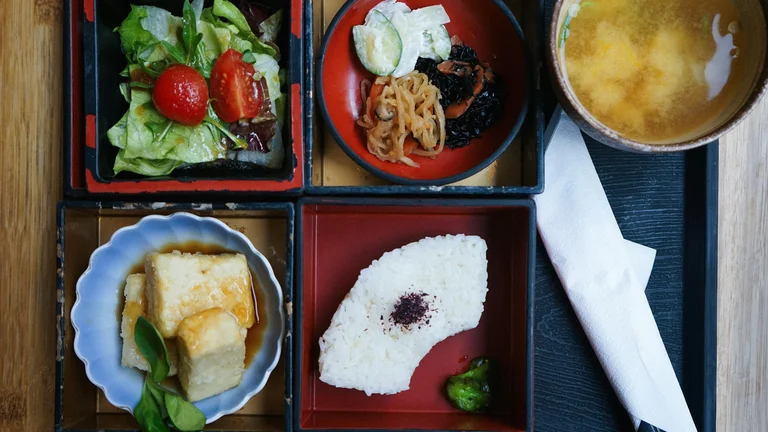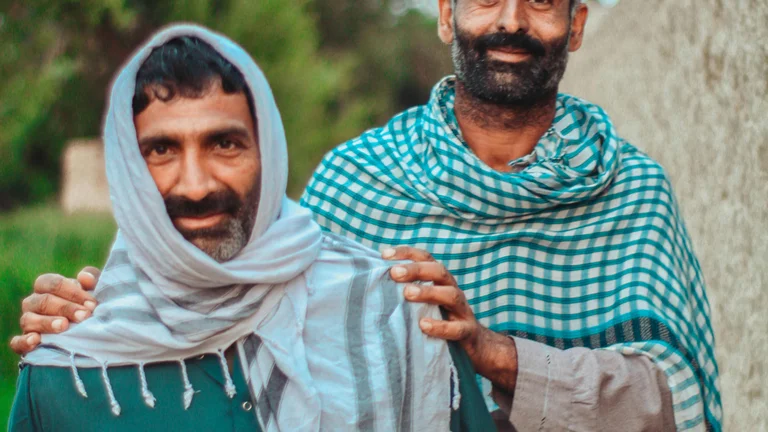
Food functions as an essential narrative and symbolic device in doramas and drama shorts, profoundly influencing tone, character development, cultural context, and emotional resonance. Unlike many Western shows, where food may appear only incidentally, in East Asian dramas—especially Japanese, Korean, and Taiwanese doramas—meals and eating scenes have grown to embody rich layers of meaning, thereby enriching the storytelling in multifaceted ways. Such portrayals do not merely illustrate characters consuming meals but elevate food to a channel of expression, connection, and identity that anchors viewers in immersive cultural and emotional realities.
The intrinsic role of food in narrative construction in doramas is multidimensional. At its surface, food scenes often offer viewers visual and sensory pleasure through meticulously crafted cinematography showcasing vibrant meals. These depictions, rooted in actual cultural practices, provide authenticity and invite audience immersion into specific traditions and lifestyles. Delving deeper, food symbolizes relationships, personal growth, social status, and emotional states.
To unpack the complexity of food in doramas and drama shorts, it is necessary to analyze its role thematically and structurally across multiple facets. These aspects include the cultural portrayal of cuisine, the role of communal eating in developing plot and character dynamics, the aesthetics and cinematographic techniques that highlight food, and the psychological and symbolic undertones embedded within food-related scenes. Additionally, we explore the distinctions and specific characteristics of short-form dramas compared to longer series regarding their treatment of food as a narrative element.
Cultural Representation of Food in Doramas and Drama Shorts
Food offers an explicit gateway into the cultural setting of a dorama and frequently serves as a vessel for cultural transmission. Japanese, Korean, and Taiwanese doramas often feature dishes renowned within their respective cultures, such as sushi, bento boxes, kimchi, bibimbap, or various street foods. These food items go beyond mere sustenance, becoming cultural icons that represent heritage, tradition, and localized identity.
In many narratives, traditional dishes point to historical continuity and respect for ancestral customs. For example, in a Japanese dorama, scenes centered around the making or sharing of a traditional miso soup or sakura mochi evoke warmth, nostalgia, and familial bonds. Meanwhile, in Korean dramas, an episode revolving around kimchi-making not only displays culinary rituals but underscores themes of patience, care, and community labor shared across generations. These moments strongly resonate with viewers, especially domestic audiences, cementing a shared cultural identity between the on-screen world and reality.
Moreover, showcasing food preparation rituals offers a pedagogical element, teaching audiences about the origins, seasonality, and significance of dishes. For international viewers unfamiliar with these foods, the dorama acts as a medium of cultural introduction, fostering curiosity and cross-cultural appreciation. This educational function is evident in both short drama formats and full-length series, but the tight narrative constraints of shorts often require more efficient and carefully-chosen food references to effectively communicate cultural essence.
The representation of food also reflects regional diversity within countries. Doramas frequently highlight urban vs. rural culinary differences, luxury versus humble home-style food, and evolving tastes blending tradition with modernity. Such portrayals contribute to rich worldbuilding, subtly framing social and economic contexts in which characters operate.
Food as a Tool for Character Development and Relationship Building
Beyond cultural framing, food scenes significantly advance character arcs and relationship dynamics. Eating together often symbolizes interpersonal connection, reconciliation, or intimacy. For instance, sharing a meal between two hesitant lovers in a Korean drama may serve as a moment of vulnerability and trust, catalyzing emotional breakthroughs. Similarly, familial meal scenes portray generational tensions or affections, revealing character motivations and histories through dialogue and non-verbal cues during eating.
Food also acts as an extension of characters' personalities. A meticulous character might prepare and curate meals with precision, suggesting discipline and particularity, while another who enjoys street food with abandon portrays freedom and spontaneity. The foods characters prefer or avoid operate as personality signifiers, enabling viewers to glean insights without explicit exposition.
In some narratives, preparing food serves therapeutic or redemptive purposes. Characters traumatized or socially isolated find purpose and joy in cooking, implying healing and rediscovery. This emotional dimension woven through culinary engagement deepens viewer empathy and investment.
The role of food in relationship building often includes pivotal scenes of invitation or hospitality. Inviting someone to share a meal can mark the formalization of friendship, business partnership, or romance. An invitation to eat may also serve as an olive branch after conflict, symbolizing the possibility of reconciliation. The act of feeding others denotes care and nurturing, reinforcing bonds beyond dialogue alone.
In drama shorts, where narrative time is compressed, food-related scenes frequently become concentrated vessels for expressing significant relationship milestones or emotional exchanges. The brevity of the format amplifies the symbolic weight of these moments.
Cinematic Techniques Highlighting Food and Eating
Food’s visual presentation in doramas is meticulously managed via cinematographic strategies that elevate it into a central spectacle. Close-up shots linger on the texture, color, and steam rising from the dish, stimulating viewers’ senses vicariously. These shots often utilize soft lighting and saturated colors to enhance appeal. Slow-motion sequences emphasize the act of biting, chewing, or savoring, contributing to a persuasive sensory experience.
Camera angles can signify subjectivity and mood. For example, point-of-view shots during eating invite viewers into the character’s intimate experience, heightening empathy. Montage editing may be used to contrast characters’ different eating experiences or preferences, visually narrating personality clashes or complementarities. The rhythmic pacing of these food sequences also affects narrative tempo, sometimes slowing time to signify contemplation or speeding it during communal feasts to invoke vibrancy.
Music and ambient sound elevate food scenes further. Sounds like chopping, sizzling, or slurping reinforce realism and engagement, while background melodies may reflect character emotions or cultural ambiance. The sensory layering from sight, sound, and implied taste intensifies immersion.
Psychological and Symbolic Dimensions of Food in Doramas
Food often operates symbolically, embodying abstract themes and psychological states. It can represent comfort, security, or nurture but equally evoke loneliness, deprivation, or longing. In scenes where characters eat alone, food consumption may highlight isolation or emotional hardships, contrasting starkly with shared meals that symbolize connection.
In doramas exploring identity, food sometimes becomes a metaphor for self-discovery. Characters engaging with culinary traditions of their heritage or learning to cook can parallel journeys to understand their roots or forge new paths. Food also symbolizes societal roles; for example, characters with culinary skills may assert cultural authority or social status.
Moreover, food’s role transcends the literal and enters metaphorical territory during dream sequences or fantasy scenes. Dishes may represent desires, fears, or memories, acting as narrative devices for psychological exploration. Symbolic foods such as sweet desserts may represent innocence or rewards, while bitter or spicy foods might reflect conflict, bitterness, or challenge.
The role of food in rites of passage, such as festival meals or celebratory dishes, frames milestones in character growth or communal belonging. These occasions frequently anchor episodes or dramatic arcs and symbolize transformation and acceptance.
Food Narratives in Drama Shorts: Unique Considerations
Drama shorts differ structurally from full-length doramas, necessitating compact storytelling. This condensed format demands that food’s narrative functions be sharp and purposeful, efficiently conveying cultural, emotional, or relational subtexts. Food scenes in shorts often serve as bookends or climactic moments, encapsulating an entire emotional or thematic arc in minutes.
This brevity encourages symbolic and economical use of food imagery. Visual shorthand becomes essential: a single shot of shared bowls, a handshake over food, or a fleeting moment of tasting can imply a host of meanings without extensive dialogue. Food thus serves as a universal language in these tight narratives.
Additionally, since drama shorts often target mobile or digital audiences with limited attention spans, the visual allure and emotional immediacy of food scenes can actively hook viewers. The sensory stimulation that food imagery provides balances narrative compression.
Integrating Food as a Commercial and Marketing Element
Another dimension to consider is the commercial impact of food depiction in doramas. Culinary products featured on screen often experience heightened popularity in real life, leading to cross-promotional marketing strategies. Packaging, restaurant placements, or branded recipes linked to a dorama feed into merchandise ecosystems, blurring narrative and consumer spaces.
This commercial synergy influences how food is portrayed, with some dramas spotlighting aesthetically photogenic or trendy dishes that appeal to younger demographics. Social media amplification of food scenes further extends doramas’ reach.
However, this commercialization does not dilute narrative depth but can reinforce cultural diffusion and food tourism. For example, Korean dramas increased global interest in Korean cuisine substantially, with many viewers motivated to discover foods like bulgogi or soju through cultural fascination sparked by on-screen portrayal.
Examples of Iconic Food Moments in Notable Doramas
Numerous memorably crafted food scenes illustrate this theme. The Korean drama Reply 1988 frequently depicts communal family meals, symbolizing warmth, generational bonds, and socio-economic reality in late 20th-century Seoul. Meanwhile, the Japanese dorama Shinya Shokudo centers the entire narrative on a late-night diner whose food serves as a sanctuary for diverse patrons, each meal laden with personal stories and social commentary. Taiwanese short dramas such as Lost in Love intertwine street snacks as tokens of affection, highlighting nostalgic and romantic undertones.
These examples underscore the emotional effectiveness of food scenes. They cultivate realism and intensify viewers’ emotional engagement by combining sensory pleasure with cultural and narrative insight.
Comparative Table of Food Usage Across Doramas and Drama Shorts
| Aspect | Doramas (Full-Length) | Drama Shorts |
|---|---|---|
| Cultural Representation | Detailed and expansive, exploring seasonal and regional cuisines. | More selective, using iconic dishes to evoke culture efficiently. |
| Character Development | Extended food-related arcs, gradual emotional progress with food as metaphor. | Compressed emotional highlights centered on food moments. |
| Visual Treatment | Multiple elaborate food scenes allowing aesthetic build-up. | Highly focused food shots to maximize immediate impact. |
| Relationship Building | Multiple eating scenes showing evolving relationships over time. | Single or few crucial scenes symbolizing key emotional shifts. |
| Commercial Influence | Integrated slowly with product placement developing over episodes. | Intensive use of trending food imagery for viral marketing. |
List of Core Functions Food Serves in Doramas and Drama Shorts
- Acts as a cultural signifier contextualizing setting and tradition.
- Facilitates character insight and psychological depth.
- Shapes interpersonal dynamics and relationship development.
- Provides sensory stimulation through visual and auditory cues.
- Symbolizes abstract themes such as comfort, identity, or transformation.
- Serves as a narrative shorthand especially potent in concise formats.
- Supports commercial and marketing opportunities linking fiction to reality.
Guidelines for Incorporating Food in Scriptwriting for Doramas and Shorts
For creators aiming to utilize food effectively in storytelling within these genres, there are key recommendations. First, select culturally resonant dishes that authentically reflect characters’ backgrounds or story settings. Avoid generic or irrelevant food items to preserve narrative credibility. Second, consider food scenes as multifunctional: these moments can reveal emotional subtext, advance plot, and enrich visual atmosphere concurrently.
Third, leverage sensory detail in script and direction. Describe food textures, aromas, and tastes vividly to encourage actors’ expressive engagement and camera work that captures these nuances. Fourth, balance explicit dialogue about food with subtle, non-verbal cues such as expressions and gestures during meals. This layering provides richer characterization.
Fifth, in drama shorts especially, treat food scenes as focal story events deserving sufficient screen time and creative framing rather than background filler. Finally, align food depiction with the broader themes and tone of the drama, ensuring consistency across narrative and aesthetic elements.
Following these guidelines enhances both viewer investment and the authenticity of food’s representation within the story world.
In summary, food’s role in doramas and drama shorts transcends simple sustenance to become a complex, richly symbolic thread weaving together culture, emotion, identity, and narrative flow. It anchors stories in tangible cultural experience while providing a versatile and visually compelling medium to explore human relationships and personal transformation. The multifunctionality of food in these media forms secures its place not only as a storytelling device but as a cultural bridge and emotional focal point that resonates deeply with diverse audiences globally.
FAQ - The Role of Food in Doramas and Drama Shorts
Why is food such a significant element in doramas and drama shorts?
Food serves as a multifaceted storytelling device in doramas and drama shorts, offering cultural context, advancing character development, and symbolizing emotional and relational themes that enrich the narrative beyond mere sustenance.
How do food scenes contribute to character development in these dramas?
Food scenes reveal character personalities, emotional states, and relationships through preferences, dining habits, and shared meals, often symbolizing intimacy, conflict, healing, or growth within the story.
Are the depictions of food in doramas authentic to their cultures?
Yes, doramas meticulously incorporate culturally accurate traditional dishes and culinary practices that reflect social, regional, and historical realities, enhancing authenticity and cultural education.
How do drama shorts differ from full-length doramas in using food narratively?
Drama shorts employ food scenes more economically, using them as potent symbolic moments that convey complex emotions or cultural messages quickly, given their shorter runtime and compressed storytelling.
Does food imagery in doramas influence real-world food trends?
Absolutely, food depicted in popular doramas often sparks increased interest and demand, influencing food tourism and marketing, especially for culturally iconic dishes featured prominently.
What cinematic techniques are used to emphasize food in doramas?
Close-up shots, slow motion, selective lighting, sound effects of cooking and eating, and point-of-view perspectives combine to heighten the sensory appeal and emotional significance of food scenes.
Food in doramas and drama shorts acts as a crucial storytelling element that conveys cultural identity, deepens character relationships, and enhances emotional narratives through vivid visual and symbolic portrayals.
Food is a vital narrative and symbolic component in doramas and drama shorts, intertwining cultural authenticity with emotional storytelling. Its depiction extends beyond nourishment, influencing character dynamics, setting, and thematic depth. The meticulous portrayal of food enriches viewer engagement and cross-cultural appreciation, securing its role as a powerful conduit for drama and human connection.






